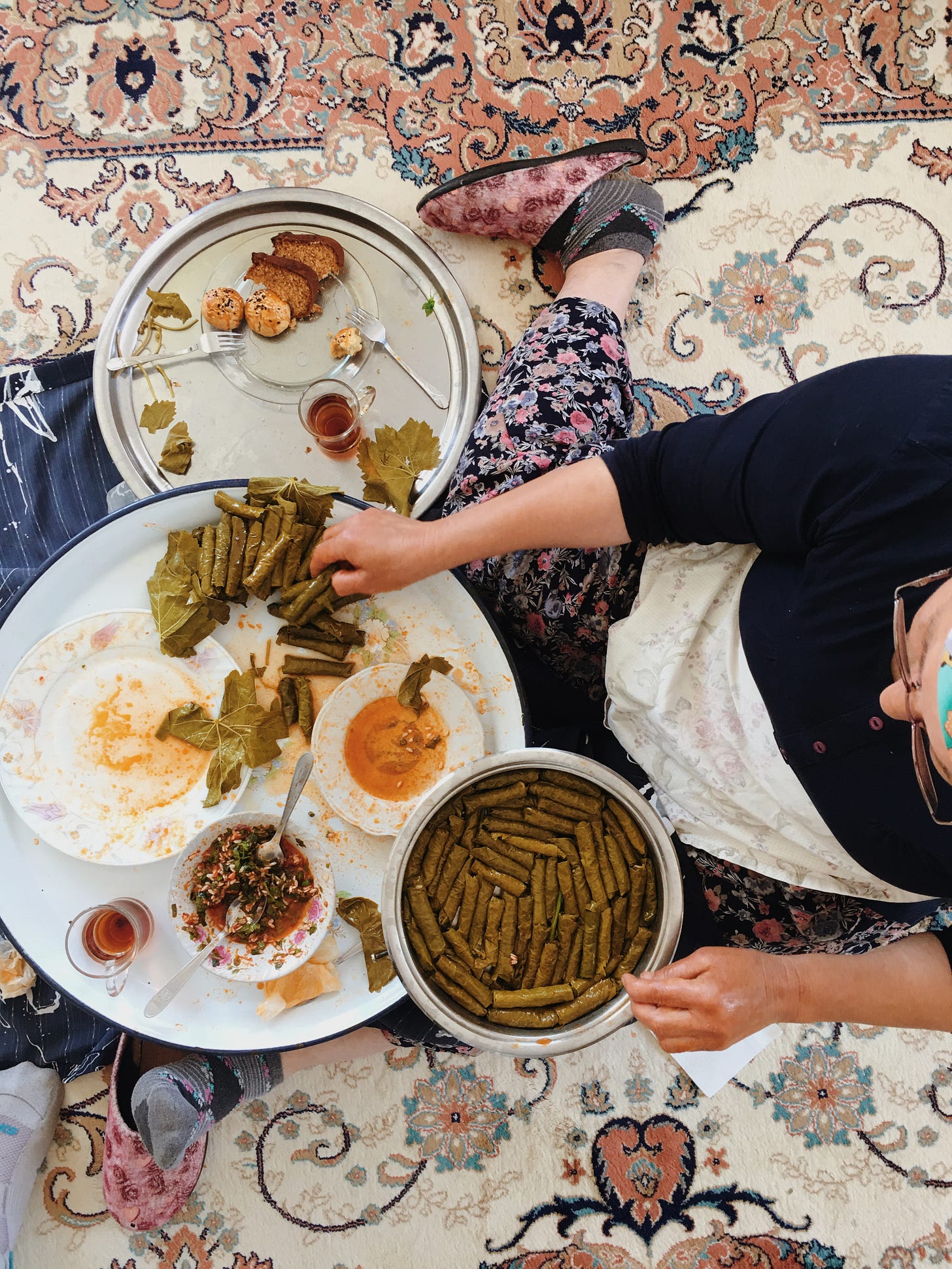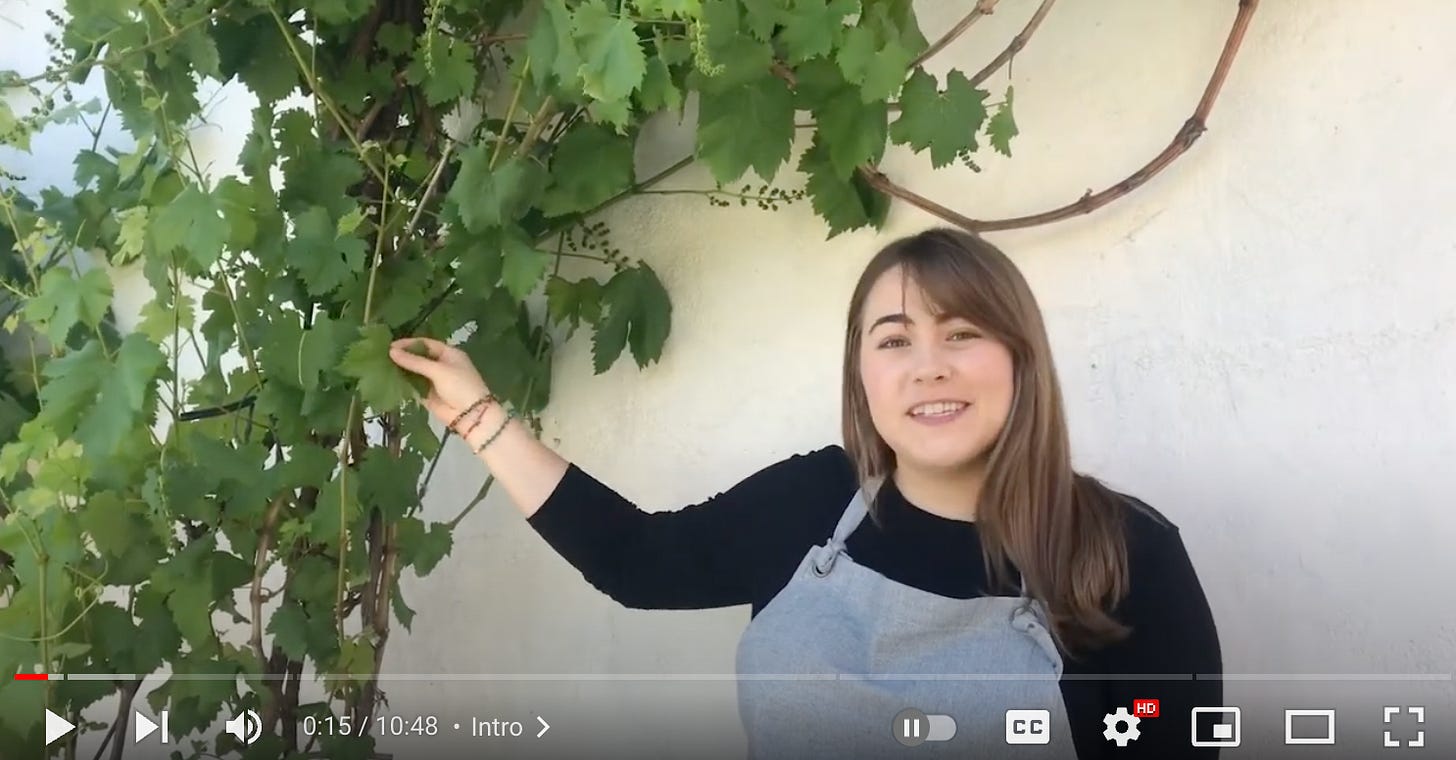“Climb a little higher. There are fresh leaves behind the grapes,” my mother-in-law shouts in Turkish from below. Despite my keen fear of heights, I do as she says and find a cluster of large, perfectly intact grape leaves. I snap them from the vine and add them to the pile I have gathered under my arm. As I descend from the shaky ladder, my mother-in-law verbally explains the next steps of her coveted sarma recipe. We walk from the garden into the kitchen, removing our outdoor sandals and replacing them with plush house slippers.
We plop the leaves into a bowl filled with water to clean them and then add them to the salted boiling water my mother-in-law prepared. After a few seconds, we removed the leaves which are ready for sarma assembly.
My Turkish in-laws are from a small village in the Aegean region of Turkey, only ten minutes from the ancient city of Ephesus. In this region, fruits and vegetables grow with ease. Sarma, meaning “rolled” in Turkish, uses a rice-based filling to stuff grape leaves.
While sarma from other regions of Turkey, Central Asia, and the Middle East often include meat, our family recipe does not. Into the rinsed rice, we add canned tomatoes, pul biber, tomato salça, chopped mint, chopped parsley, diced white onion, diced green onion, olive oil, salt and pepper. Once prepared, everyone is called to the kitchen to help roll the sarma. Despite my simplistic Turkish language abilities, my confidence grows in settings where food is the focus.
My mother-in-law lays a thin cloth on the ground and places a large round tray on top. As we sit around the tray, rolling the sarma, I hear the family gossip and listen to stories from the village. Occasionally, one of my feet goes numb, and I shift my position. I attempt a joke in Turkish, and my family laughs, maybe because it is funny or because I used the wrong word. Either way, they appreciate my courage to join the exchange. Meanwhile, our Turkish tea glasses are continually replenished, and the spoons' clink in the glass cups adds percussion to the conversation.
Sarma is a dish used to determine the skill level of a Turkish cook. Each rolled sarma should be as thin as pinky and hold together during cooking. My mother-in-law swears that sliced lemon and a plate on top of the rolled sarma are the secrets to her success. After an hour of cooking, they are ready.
To see me (right) making the family sarma recipe with my mother-in-law (left), please see the video HERE.
My family expectantly gathers and compliments the texture and taste of the sarma. With a wink in my direction, my mother-in-law deflects the praise towards me. We both know this is misdirected, but I am grateful for her generosity.
This recipe for Aegean-style sarma has helped me connect with my Turkish family and participate in traditions. I cherish the ingredients foraged from our land, but more importantly, I long for the familial connection strengthened through the recipe process.
Last week, I hosted a small cooking class in our home in Dallas. We made lentil soup, bitta bread, and sarma. It was really fun bringing this recipe to life with dear friends. Salih even jumped in to demonstrate how to roll the sarma (see photo below).








